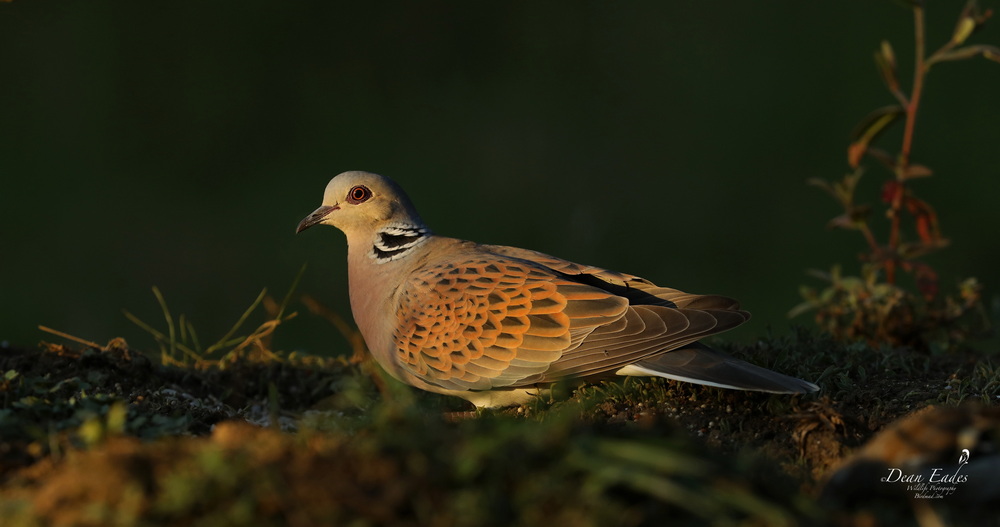Hundreds of UK farmers, landowners and volunteers are helping to give the gift of hope for Turtle Doves, working with Operation Turtle Dove to provide better nesting and feeding habitat for the rare birds across southern and eastern England.A record year of collaborative effort across southern and eastern England is helping to turn around the fortunes of Turtle Doves, a globally threatened migratory dove. Operation Turtle Dove aims to boost numbers through the improvement of breeding habitat and food availability here in the UK, harnessing the power of hundreds of farmers, landowners and volunteers through science-led conservation. This year, the project is celebrating a record year of effort, with the number of farmers, landowners and volunteers involved rising to the highest ever since the project began in 2012.
Hundreds of UK farmers, landowners and volunteers are helping to give the gift of hope for Turtle Doves, working with Operation Turtle Dove to provide better nesting and feeding habitat for the rare birds across southern and eastern England.
This year, the project is celebrating a record year of effort since the project began in 2012, with over 260 farm holdings – covering over 68,500 hectares – and a further 107 land managers helping to create the perfect conditions for these iconic birds alongside dedicated volunteers.

Turtle Dove, copyright Dean Eades, from the surfbirds galleries
A science-led conservation project aimed at improving the future of the UK’s Turtle Doves, Operation Turtle Dove is working to turn around the fortunes of this much-loved migratory dove that spends the winter in West Africa before migrating back to our shores for spring and summer to breed.
Operation Turtle Dove is a partnership, between the RSPB, Natural England, Pensthorpe Conservation Trust and Fair to Nature, which has led to the creation of 620 foraging and supplementary feeding sites for these special birds this year alone, a figure almost double the number provided in 2022.
It has been working to create these feeding areas, maintain dense scrub and hedgerows as nesting sites, provide ponds for drinking and washing, and supply seed food – all of which have been shown to benefit Turtle Doves in focused trials. Now these conservation tools – as a tested formula for success – are being carefully rolled out by expert staff to improve the fortunes of these summer visitors right across the southern and eastern of England.
Work to create the perfect nesting and feeding conditions is a collaborative effort, with the RSPB’s dedicated Turtle Dove advisors supporting farmers and landowners, volunteers and communities in their efforts to help Turtle Doves in stronghold areas.
“The ambition of the communities and landowners we work with to help save these iconic birds is nothing short of amazing, and if we continue with this momentum, it won’t be long before we can expect to see Turtle Dove numbers starting to rise across the UK.” Mike Shurmer, Head of Species for RSPB England.
Engaging with farmers and local communities has been vital, as changes to the farmed landscape have made it increasingly difficult for farmland birds, including Turtle Doves, to find food and suitable nesting habitat. These agricultural changes have meant that an estimated 2,100 breeding territories remain in the UK according to the 2021 National Turtle Dove survey.
Meanwhile, recently released data shows that overall farmland bird numbers have fallen by over 60% across the UK since the 1970’s. Previous targeted conservation work, in partnership with farmers and landowners, has however shown that we can reverse these declines, as demonstrated by successful work to bring back Cirl Bunting and Stone-curlew from the brink of extinction in the UK
“The habitat creation we are delivering with farmers and land managers through Operation Turtle Dove is key to improving the fortunes of these incredible birds, as numbers of potential breeding birds arriving here are likely to increase over the next few years. We are now in the third consecutive year of a Turtle Dove hunting ban along the Western European Flyway and – thanks to these two conservation approaches working hand in hand – it’s amazing to hear about birds returning to breed in parts of southern and eastern England after the hard work and dedication of so many land managers and communities.” Rebecca Pringle, Senior Ornithology Specialist at Natural England.
Alongside conservation efforts in the UK, a hunting moratorium across south west Europe has meant that one million fewer Turtle Doves have been shot during this year’s migration. This crucial lifeline, alongside habitat restoration and supplementary feeding in the UK, has been ensuring the right conditions for Turtle Dove recovery.
Creating farmland habitat features – from hedgerows to ponds and flower-rich planting– even in gardens and local greenspaces can benefit Turtle Doves on their return to the UK. Having travelled 2,500 miles on migration from sub-Saharan Africa across France, Spain and Portugal, the birds can refuel quickly and start breeding here in the UK thanks to this work, with some pairs raising multiple broods over the summer. A whole host of other rare UK wildlife in these areas, such as Grey Partridge, Nightingale or Yellowhammer, can benefit from Turtle Dove friendly habitat too.
Mike continued: “We now are at the crucial midway point between National Turtle Dove Surveys, with the next one planned for 2026. We are hopeful that these efforts, alongside effective conservation at scale across the whole of the Turtle Dove migration flyway, will have helped us to turn a corner for this bird. Ten years ago, the prospects for Turtle Doves looked bleak: plummeting populations and little sign of being able to fix either their breeding habitats or very high, and clearly unsustainable levels of hunting. But, through collaboration, focus, and persistence we have developed and implemented the evidence base, changing this completely. We are hopeful that we will see the results of this dedication in 2026’s national survey results.”